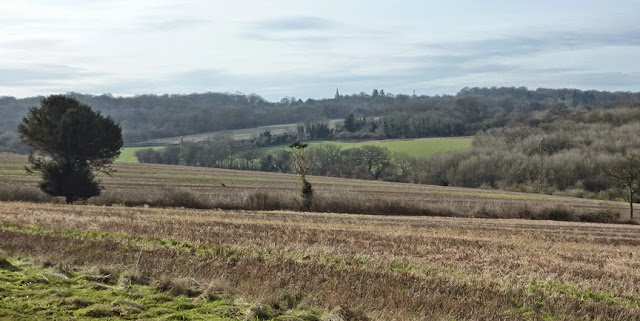The end and the beginning
 |
| Walton Downs, looking across Langley Vale Farm. What odds for Red Hemp-nettle or a Stone Curlew in 2016? |
So 2015 is starting to wind down. The hustle and bustle of Christmas might be upon us, but for the birder, mother and botanist (not to forget all those other naturalists looking at all sorts of other wildlife), it is time to get all those records sorted out, sent off and start planning for the new campaign that is, and will be called, 2016.
A few years ago I would have been rummaging through my notebooks, retrieving those observations that seemed worthy enough to send to the recorder (of Surrey, London, Kent and, sometimes, Sussex). Nowadays it is much simpler process, at least for the bird records, via the BTO’s Birdtrack service. Some birders cannot get enough of it, and send in tens of thousands of records each year from across the UK. My own efforts are on a smaller, more parochial level. The only non-local record that I needed to do anything about was the Bonaparte’s Gull at Dungeness back in May. This necessitated a description to be sent to the BBRC, which was duly done. And, I’m pleased to say, was duly accepted.
As for my plant, butterfly and moth records, I must admit to not doing anything with them. I should, especially this year, what with some noteworthy finds and good counts. Maybe I need to address this. No, not maybe, definitely.
So, what about 2016? To set targets or goals just leaves you open to turning everything into work, when it should be nothing but enjoyment. However, there are species that I would dearly like to see, mainly plants and moths, which need a modicum of planning to bring about success. I have a longstanding ‘list’ of targets, and each year manage to knock one or two species off of it, although this year was not a great one for hitting these - having said that, it was a great year regardless.
If I learnt anything from this year, it was that I didn’t need to go far to get my fix. Admittedly, frequent sojourns to Dungeness dampened down the need to ‘score’ locally, but aside from that, there was so much to see (and learn) close to home. Plants that I didn’t know existed locally (and notable ones to boot) either popped up in front of me or I was told where to look. Butterflies and moths continued to fascinate, with their peaks and troughs never the same from one year to the next. Only the birds disappointed, but that can all change. Maybe 2016 will their year?


Comments